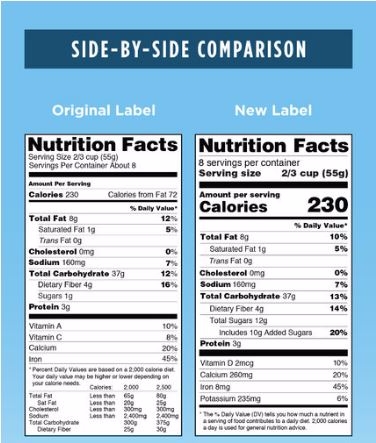FDA Changes the Nutrition Label
 For the first time since the early 1990s, the Food and Drug Administration has updated the nutrition label that appears on packaged foods. The agency is proud of the change, calling it a "major step." Michelle Obama has been part of the process and is quoted in the FDA's press release: "This is going to make a real difference in providing families across the country the information they need to make healthy choices."
For the first time since the early 1990s, the Food and Drug Administration has updated the nutrition label that appears on packaged foods. The agency is proud of the change, calling it a "major step." Michelle Obama has been part of the process and is quoted in the FDA's press release: "This is going to make a real difference in providing families across the country the information they need to make healthy choices."
The major changes, in case they're hard to notice, include bigger calorie and serving size numbers, and a new line for added sugars.
I have to say I'm disappointed. This is the first change in more than 20 years, when the label was introduced. Although these modifications are important, they say little for the FDA's ability to rethink what information people need to make good food choices and how it could be best represented.
Is there no other visual that could help people? A more dramatic change, in itself, might encourage people to look. Also, the percentages are still based on a 2,000-calorie diet, which the FDA deems average, but this doesn't suit everyone.
This change comes when the FDA is under pressure to revise what it calls "healthy" food. This month, The Wall Street Journal questioned the agency's logic. According to the FDA, avocados and almonds aren't healthy because they are high in fat. Frosted Flakes and low-fat Pop Tarts are okay because the requirements don't include other factors, such as sugar content. The FDA responded to The WSJ's inquiry: "We believe now is an opportune time to re-evaluate regulations concerning nutrient content claims, generally, including the term ‘healthy.'"
We'll look forward to those changes happening soon.
Discussion Starters:
- What other type of visual could help people make decisions about food?
- Why do you think the label has stayed the same for more than 20 years?
